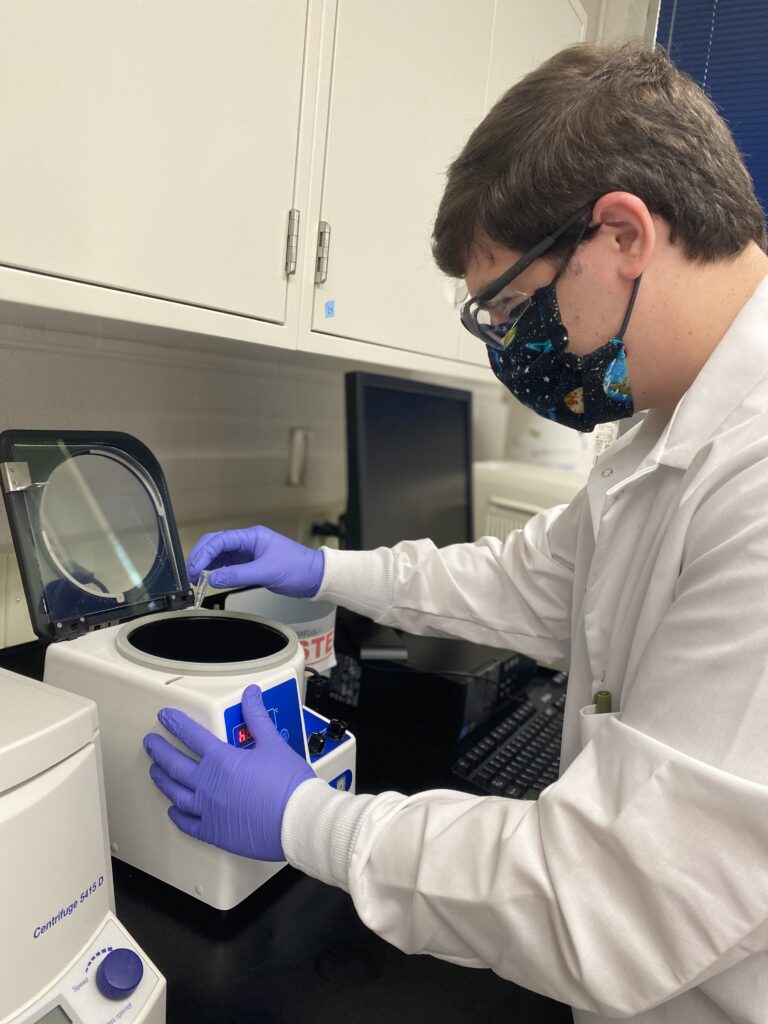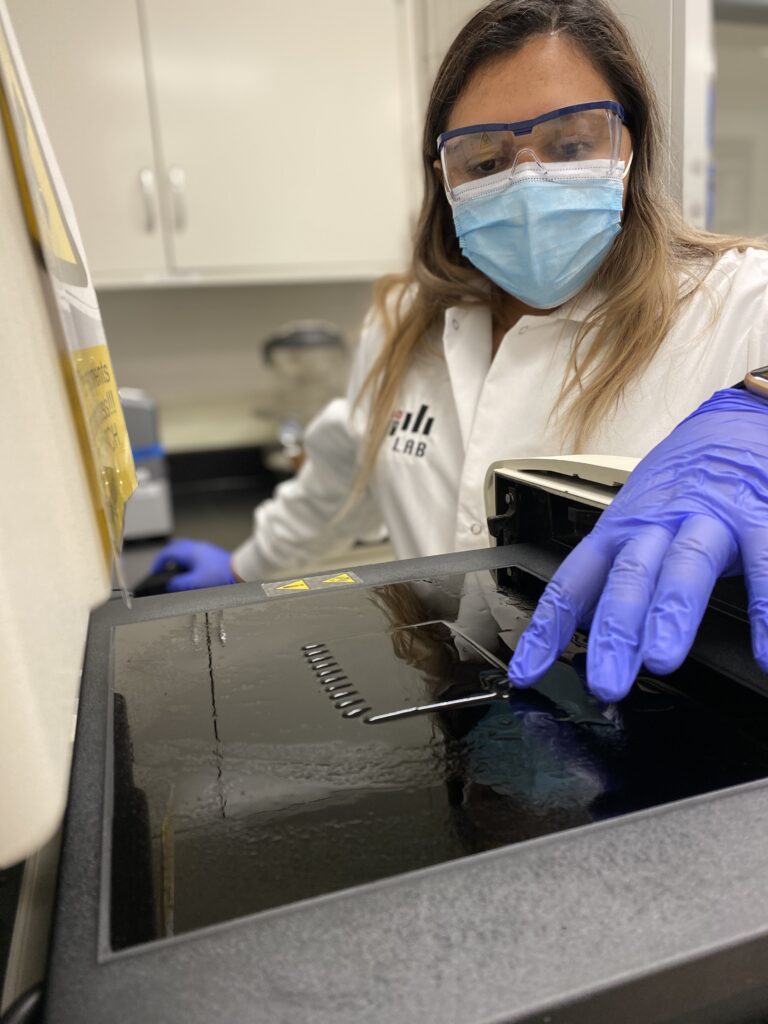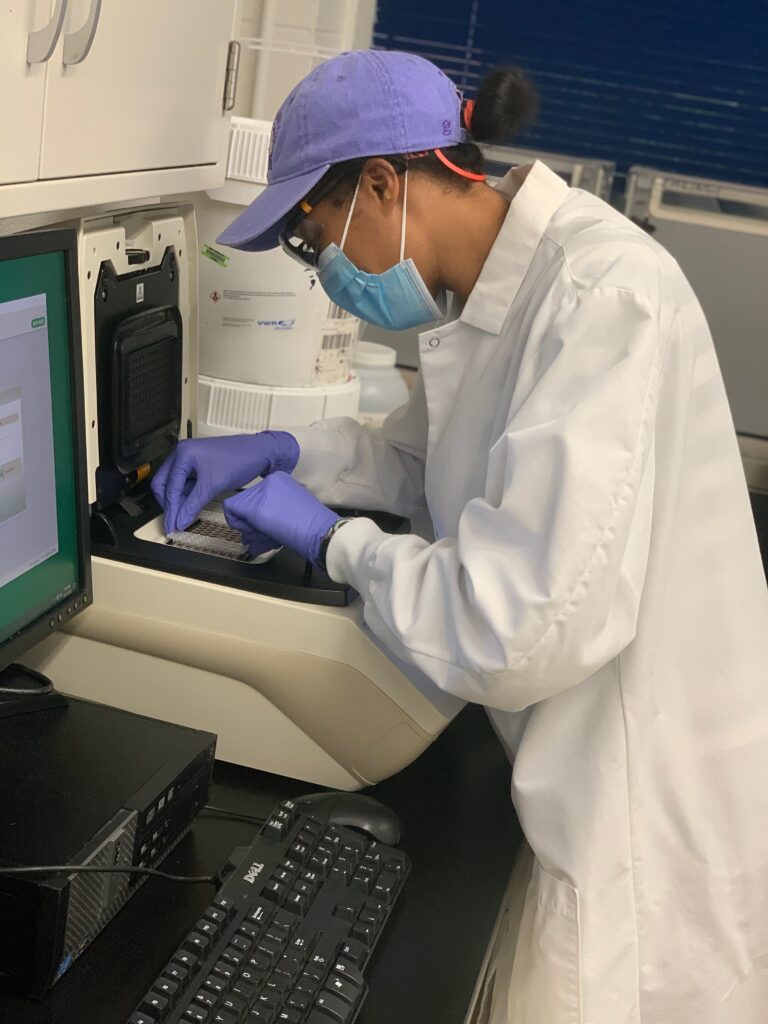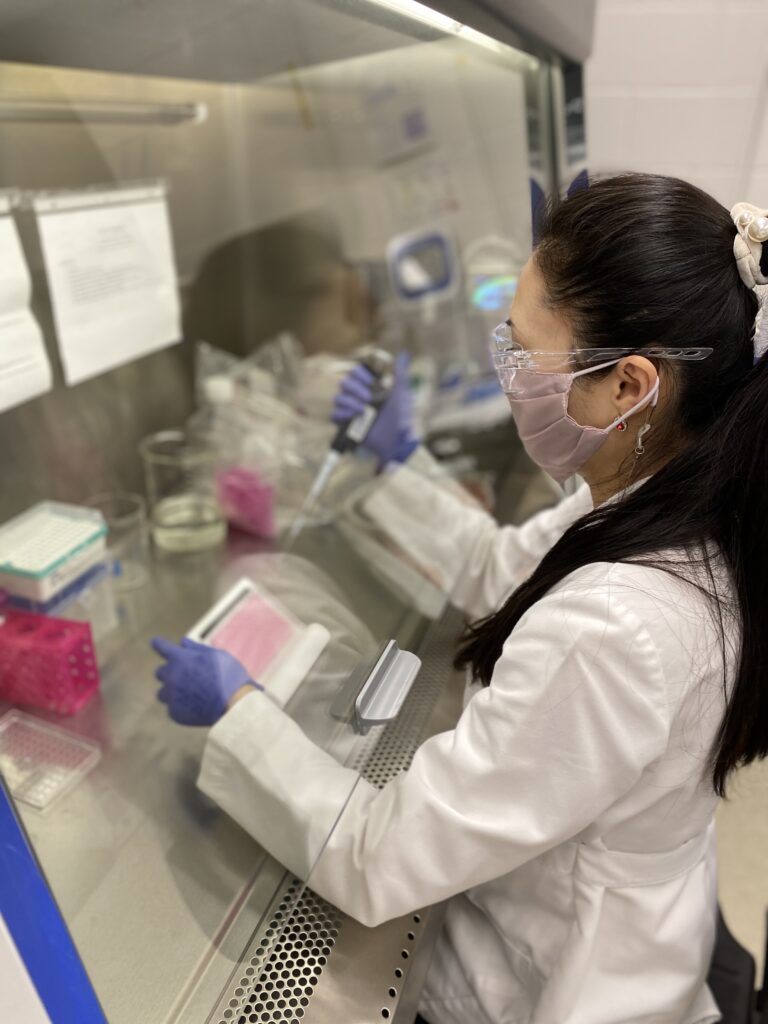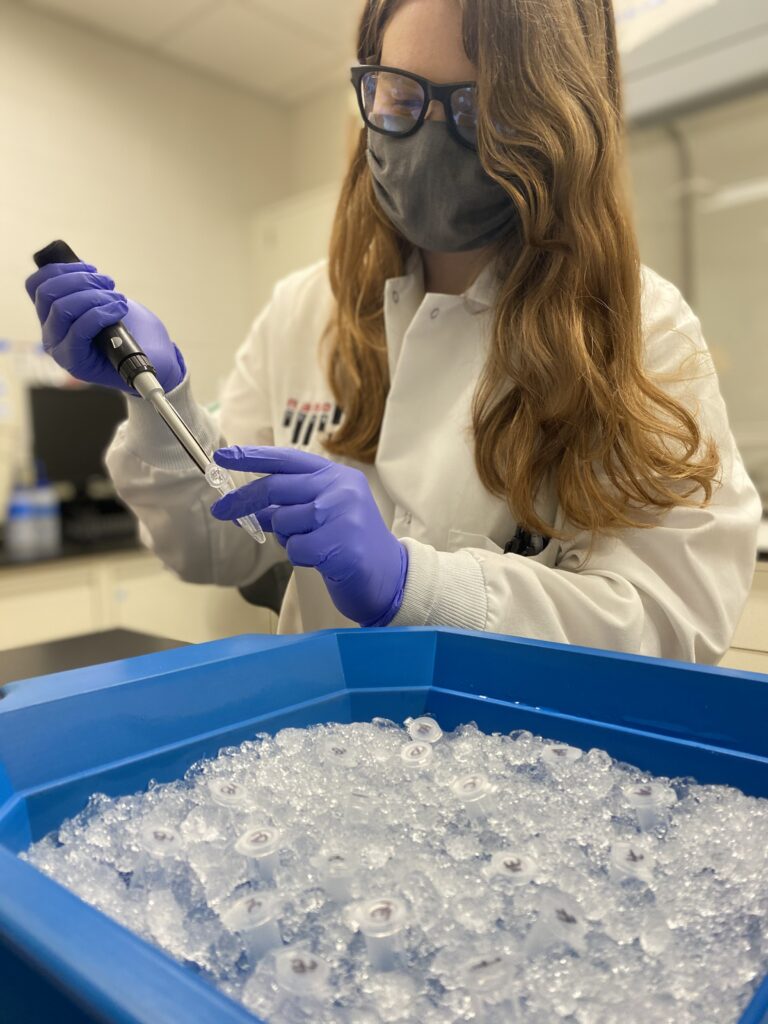CLAS Researchers Named Among World’s Top 2%
Eighteen researchers in UNC Charlotte’s College of Liberal Arts & Sciences (CLAS) are among the top 2% percent of the world’s most cited researchers, detailed in a Stanford University study.
In all, 41 researchers affiliated with UNC Charlotte are ranked. CLAS researchers from five academic departments represent almost 45 percent of the UNC Charlotte researchers on the list.
“Having so many faculty members on this list is one marker of the influence and impact that the researchers in CLAS and across UNC Charlotte are having around the world,” said CLAS Associate Dean of Research and Graduate Education Pinku Mukherjee. “Being included in this list is a sign of the respect that other researchers have for the work of our faculty, as they draw upon that research and cite it. We are proud of the outstanding researchers and educators who belong to UNC Charlotte and the CLAS academic community.”
The study, which was published in the prestigious PLOS Biology Journal, started with almost eight million scientists. The researchers created a database of 100,000 top scientists from around the world in 22 fields whose research was cited from 1965-2019. Based on a series of metrics, including the career-long citation impact of their published research, the study is among the most comprehensive global faculty-evaluation resources ever produced.
CLAS researchers included on the list are:
- Ishwar Aggarwal, Physics & Optical Science
- Vasily Astratov, Physics & Optical Science
- Steve Bertz, Chemistry
- Glenn Boreman, Physics and Optical Science
- Kenneth Bost, Biological Sciences
- Lawrence Calhoun, Emeritus, Psychological Science
- Mark Clemens, Biological Sciences
- Patricia Fall, Geography & Earth Sciences
- Nathaniel Fried, Physics & Optical Science
- Greg Gbur, Physics & Optical Science
- Tsing Hua Her, Physics & Optical Science
- Michael Klibanov, Mathematics & Statistics
- Larry J. Leamy, Biological Sciences
- Ian Marriott, Biological Sciences
- James Oliver, Biological Sciences
- Richard Tedeschi, Emeritus, Psychological Science
- Jean-Claude Thill, Geography & Earth Sciences
- Robert Tyson, Emeritus, Physics & Optical Science
Cancer Researcher Andrew Truman Inducted as Cell Stress Society International Fellow
Cell Stress Society International has inducted UNC Charlotte Biological Sciences Assistant Professor Andrew Truman as a Fellow.
Fellows distinguish themselves in a variety of ways, including path-breaking contributions to the cell stress responses and molecular chaperones field, and through service to the society.
Truman’s cancer research uses quantitative proteomics, molecular biology, systems biology and model organisms to understand the role of molecular chaperones in cancer. Chaperones are proteins that interact with, stabilize, or help other proteins to acquire their shape or structure without remaining in the final structure.
Truman joined the faculty at UNC Charlotte in 2015, after a stint as a research professional at the University of Chicago. He earned his doctoral degree in biochemistry at University College London, UK, focusing on the interplay between molecular chaperones and MAP kinase pathways in yeast. He also worked as a postdoctoral scholar at Johns Hopkins University and Boston University.
In addition to his collaborative research with colleagues worldwide, and his mentorship of emerging researchers, Truman was one of the three primary organizers of the society’s “First Virtual International Congress on Cellular and Organismal Stress Responses,” on Nov. 5 and 6.
Truman also has published a number of academic papers in Cell Stress & Chaperones, the society’s integrative journal of stress biology and medicine, as well as other journals. Most recently, he is a co-author, of a paper featured on the cover of the November issue of The FEBS Journal, along with doctoral student Nitika and colleagues. Another recent paper was published this summer in the Journal of Biological Chemistry, also with Nitika and colleagues from other institutions.
Check out Truman and his lab on Twitter: @TrumanLab
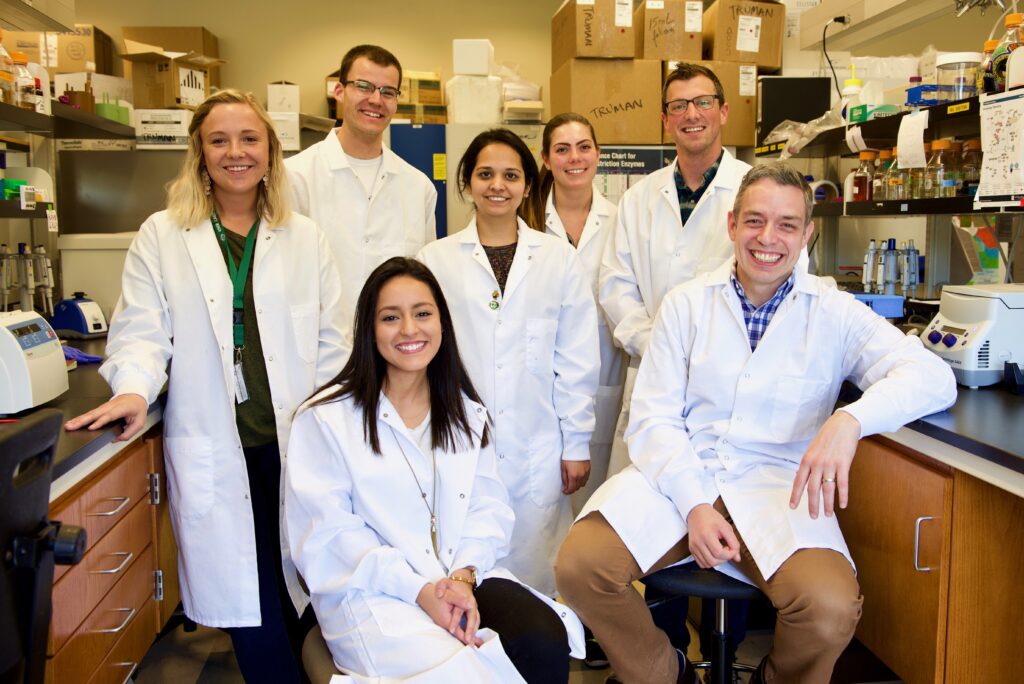
Words and Image of Lab Team: Lynn Roberson, CLAS Communications Director | Profile Image of Truman: Courtesy of Truman
Tonya Bates of Biological Sciences Receives Teaching Excellence Award
Tonya Bates, a senior lecturer in the Department of Biological Sciences, is the 2020 recipient of the UNC Charlotte Award for Teaching Excellence. She and Bank of America Award for Teaching Excellence recipient Heather Coffey of the Cato College of Education were honored during a virtual ceremony Thursday, Sept. 17.
Joining them were the other finalists for the two awards – all of whom are faculty in the College of Liberal Arts & Sciences (CLAS) – Paula Connolly, professor, English; Eric Heberlig, professor, Political Science and Public Administration; Susana Cisneros, senior lecturer, Languages and Culture Studies; and Kathleen Nicolaides, teaching professor, Criminal Justice and Criminology.
The recipients and finalists have common characteristics that set them apart.
“Their classrooms are places of inclusion where free expression of ideas is encouraged and welcomed, and where students of different backgrounds find acceptance,” said Provost Joan Lorden, as she introduced the six finalists. “They are creative. No matter what discipline they teach, they find new and inspiring methods to spark their students’ desire to learn and to grow.”
The University and its students also benefit from the excellent teaching of those with a range of titles like lecturer, clinical professor and teaching professor. The UNC Charlotte Teaching Excellence Award honors faculty members who have at least five years of teaching experience at UNC Charlotte. The Bank of America Award for Teaching Excellence, first presented in 1968, is given to a full-time, tenured faculty member with at least seven years of service to UNC Charlotte.
Bates, ’97 ’01 M.S., is a senior lecturer and a pioneer and leader within the Department of Biological Sciences in incorporating active learning, inquiry-based learning and technology in the classroom. Her courses, including high-enrollment, general education classes for non-majors, are strongly student-centered and focus on real-world applications and scientific literacy in an effort to better connect students with the material.
“Since 2010, I’ve taught biology to over 5,000 students,” Bates said. “Each of these students has provided an opportunity to reflect on why I do things the way I do, inside and outside of the classroom. Despite the large class size and barriers, my teaching remains student centered. It’s my goal to lead all my courses diversely so that students have multiple opportunities and avenues for grasping the material.”
By her adoption of a flipped classroom and other active learning approaches and by using learning assistants in large classes, her students benefit from opportunities to work collaboratively and to receive individual assistance. Instead of listening to lectures, students are engaged in low-stakes formative assessments.
“Active learning is something Tonya incorporated in her classroom long before we were all talking about it. She has worked tirelessly on re-designing Biology courses for majors and non-science majors and made these courses interactive and collaborative. Her outstanding teaching and her critical changes in our curriculum have led to better student learning outcomes in our department,” wrote Pinku Mukherjee, CLAS associate dean of research and graduate education, and former chair of the Department of Biological Sciences.
Bates, who received both bachelor’s and master’s degrees from UNC Charlotte, facilitates workshops for middle and high school science teachers, serves as a judge for K-12 science fairs, volunteers with the regional Science Olympiad competition, and serves on UNC Charlotte’s Science and Technology Expo planning committee. She also has extended her impact through training and mentoring University faculty.
Words: Aimee Hawkins
Students Raise Funds For Women In Math and Statistics Scholarship
Before her sudden death on April 9, 2020, UNC Charlotte mathematics alumna Marie Josee Mukamwiza ‘05 had created and was raising support for a “Women in Math and Statistics Scholarship” in the Department of Mathematics and Statistics.
Following her passing, the Actuarial Science Club has picked up the funding drive in memory of Mukamwiza through a Crowdfund UNC Charlotte effort. The club is more than halfway to its goal of $25,000 to endow the scholarship in memory of Mukamwiza, and her husband, Fred Hien, has offered a matching gift.
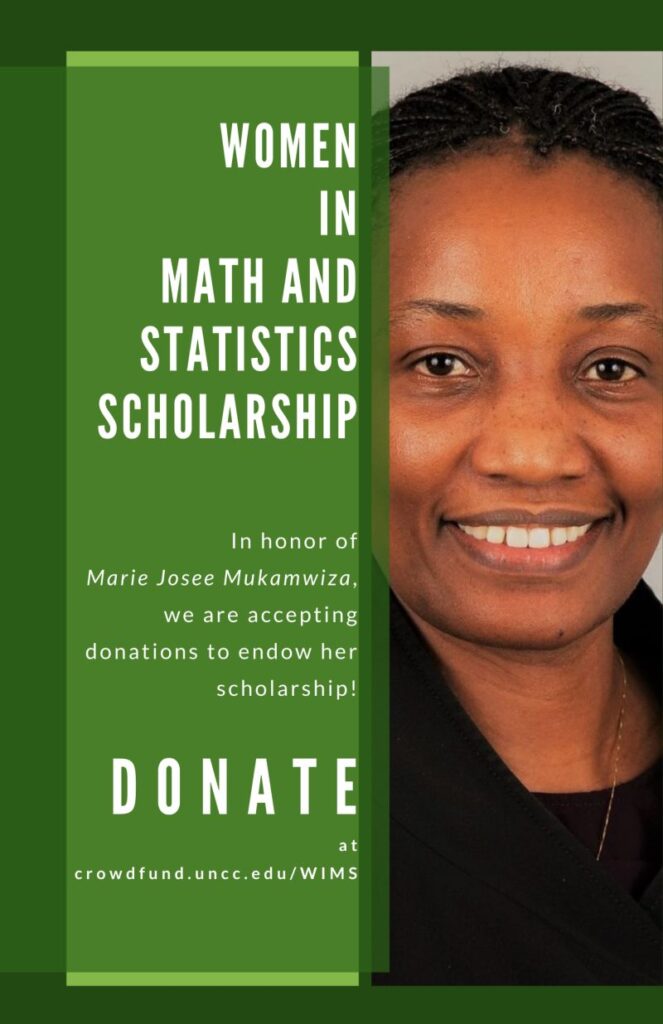
“She was dedicated to helping women in math and statistics succeed. In her honor, we created a crowdfunding project to endow her scholarship that will provide women financial help in their educational goals for years to come,” said Actuarial Club President Russell Mejia.
Last spring semester, $10,000 was successfully raised. Now, the goal is to raise an additional $15,000 to endow the scholarship fund at $25,000. The fund will provide an annual $500 scholarship to a UNC Charlotte junior or senior dedicated to encouraging gender equality in the field of mathematics and statistics.
The Actuarial Science Club is a student organization that creates a space for students interested in pursuing a career in actuarial science. Actuarial science is a field of applied mathematics, requiring mathematical and statistical skills to study and analyze uncertain events in the insurance and financial fields.
Compiled by Yoniah Johnson, CLAS student assisant
Researchers Study How Animal Societies Make Decisions, Resolve Conflict
As people react to the 2020 U.S. presidential election results, we have turned to the animal kingdom to see how animal societies make decisions and resolve conflict. We asked CLAS researchers to consider what we can learn from animal societies.
Here are our experts:
- Alan Rauch, an English professor, earned degrees in zoology and literature, and he studies and writes about dolphins.
- Stanley Schneider, a biologist, studies honey bees and their hive behavior.
- Anthropologist Lydia Light researches gibbons and other primates.
Alan Rauch – Dolphins
How do the animals you research make decisions?
Rauch: Dolphin societies are predominantly matriarchal, so a good deal of the decision-making rests in the hands (flippers) of the older and more established females. The communication and social skills of dolphins are very complex and extremely subtle. Dolphins can communicate by whistles that allow them to mediate information about who they are and where they are. Of course, we are a long way from understanding what each whistle means. Clearly though, dolphins make precise decisions, whether it has to do with synchronous swimming or well-regulated hunting.
Aside from whistles, dolphins are also capable of very high frequency sonar, which they may be able to share. And so when a school of fish swim nearby, a sonar scan of what’s called the ”bait ball” is probably picked up by other dolphins in the dolphin pod. Then, individual dolphins take turns swimming through the bait ball and feeding. How the order is established is unclear, but there is no free-for-all, so the dolphins surely have an understanding of order and priority.
What are some of the situations they face when they need to have group decision-making?
Rauch: Dolphins need to engage in group decisions while foraging for food as well as when moving locations. Given that there can be any number of dolphins in a pod, averaging around 15-25, but sometimes as many as 100-150, group coordination and communication is important. The older and more experienced dolphins must agree on the time of movement and the direction of movement.
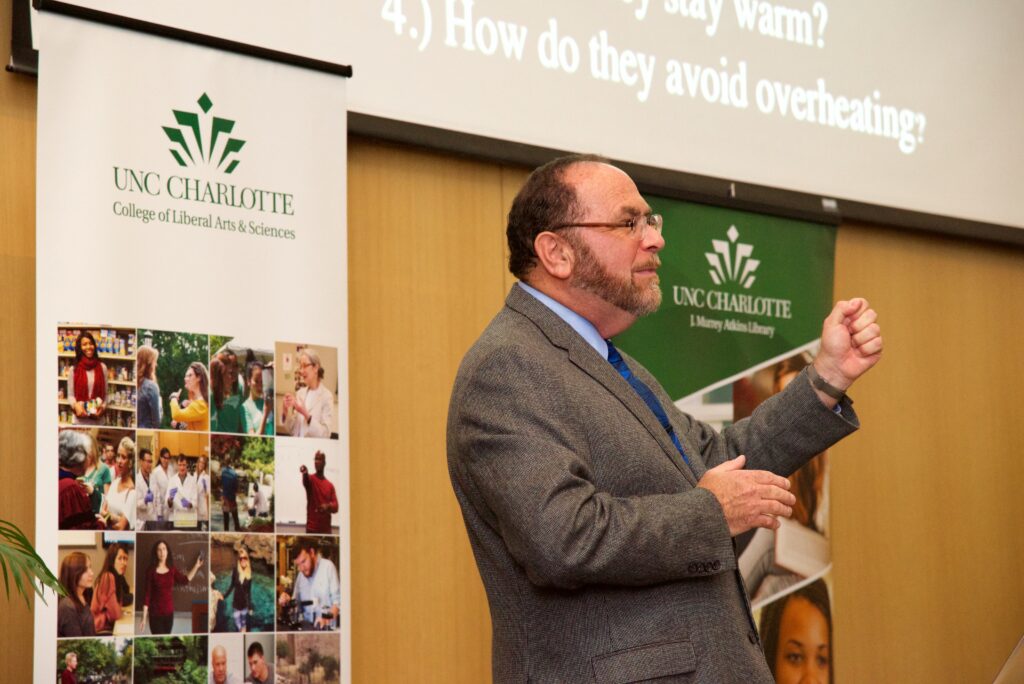
Dolphins must also work quickly and alertly – in concert – if predators, such as sharks, are nearby. In these scenarios, it is possible that dolphins release alarm chemicals in the water to alert others – quietly and without drawing attention to themselves or their young – that danger is nearby. Sleep is a complicated process in dolphins even though they seem capable of resting half their brain at any one time. But resting still makes individuals vulnerable as they float near the surface. Thus dolphins coordinate sleeping behavior with guarding behavior and take turns keeping watch while others sleep.
Finally, young calves are particularly vulnerable to predation, and they do swim very closely with their mothers. But there is a clear system of “Auntie” dolphins who do not have young of their own, but swim near mothers with calves and will often guard the calves while the actual mother forages for food.
What do the animals you study do when there is conflict in their group, particularly as decisions are being made?
Rauch: Dolphins can be very “outspoken”! Disagreement is signaled by tail slaps which may simply be on the surface of the water or, if there is need, a slap directed bodily at another dolphin. Other gestures of disagreement include “raking” when one dolphin runs its teeth superficially – but firmly – against the body of another dolphin, or a person. I’ve been raked, and it doesn’t hurt, but you do feel it.
Sound communication can precipitate group movements, but it has also been observed that group movements can be initiated by side flops, often by males, and the movement is terminated by slapping the tail gently while upside down. Since dolphins are so vocal, it is hard to know if these gestures also have specific clicks or whistles associated with them, the way we might vocalize “let’s go” while also clapping our hands together.
Stanley Schneider – Honey bees
How do the animals you research make decisions?
Schneider: I study honey bees, and many decisions are made at the “colony level” through decentralized, collective decision-making processes. Examples include choosing a new nest site by a honey bee swarm, organizing the nest into brood rearing areas and food storage areas, preparing for long-distance travel, comb building, social immunity, etc. In all cases, individual bees act on only local information using innate rules. The colony level patterns and decisions then emerge collectively. There is no centralized control of the decision-making processes.
What are some of the situations they face when they need to have group decision-making?
Schneider: Honey bees use group decision-making when they are finding a new nest cavity and building and organizing the combs. They also need to work as a group when deciding when to raise drones (males) and how many to rear; and when to raise new queens. They decide together who inherits the nest. African bees work as a group when deciding to migrate to a new area.

What do the animals you study do when there is conflict in their group, particularly as decisions are being made?
Schneider: Honey bee societies are organized very differently from mammalian societies, in that they are not based on a dominance hierarchy, and there is little overt aggression or conflict among workers within a nest. There is not conflict and disagreement; rather, there are differences of opinion. For example, when a swarm is searching for a new nest site, scout bees individually fly out to find possible cavities, and they assess the quality of the cavity using innate rules. If they like what they find, they then return to the swarm and perform waggle dances on the swarm surface to communicate to other workers the location of the cavity they found. The dance followers can then leave the swarm and investigate the cavity, and if they like it too they return and perform their own waggle dances for it to recruit others.
Initially, scout bees may advertise 12-20 different possible new nest cavities, but eventually all waggle dancing becomes focused on one cavity and when that happens the swarms moves to that chosen site. Thus, in essence the scout bees and their followers “vote” for which site is best. But they don’t do this through direct comparison. The majority of scouts only ever visit and dance for one nest site. They do not follow dancers for other sites, go visit those, and then switch their dancing to the other site if they like it better than the first one they found.
Each scout will dance for its site, then leave the swarm and revisit the site, then return and dance again, etc. But each time it returns to the swarm it dances less until finally it ceases dancing altogether. If it’s visiting a good quality site, then it dances longer each time it is on the swarm than do bees dancing for lower quality sites. In this way, there is more dancing and recruitment for the better sites and dancing for the poorer sites dwindles and dies away. The bees recruited by these dances follow the same rules and the end result is that eventually all bees are dancing for the same site (the best one they found), and dances for all other sites cease.
Thus, the “voting” is based on level of excitement and interest about the “candidate”. But there is no “bad mouthing” other choices. Only the best site can sustain the interest to keep the dancing and recruitment going until it ends up the unanimous winner. Even though bees dance for different sites, there is no conflict involved. However, bees that dance for the best site will butt their heads against a dancer for a different site and produce a “stop signal” (a short beep), which essentially says “please do shut up.” This helps to focus dancing on the best site. Then, once a site is chosen, the entire swarm must make the decision to become airborne at once and move to the new site.
Lydia Light – Gibbons
How do the animals you research make decisions?
Light: I study white-handed gibbons, a species of small apes that lives in the tops of the trees in forests throughout parts of Thailand and Malaysia. They live in small groups with one male, one female, and a few younger individuals. We used to describe gibbons as “monogamous,” but now we know they live in much more complicated social groups with some individuals living together throughout their lives, yet others might re-pair several times either because of the death of their mate or because either one of the pair deserts the group to seek other opportunities.
Based on my research and the research of other scholars, we also know now that this species of gibbon can sometimes live in groups with multiple adult males. However, the groups are very cohesive regardless of the composition. The group travels together as they range through their territory looking for food and patrolling the boundaries.
When the group moves to a new location, that decision is made by the adult female. This is thought to be based on the female’s higher nutritional needs due to pregnancy and lactation. The female will lead the group from feeding tree to feeding tree, quite deliberately, following regular pathways through the canopy of the forest and heading intentionally to the next food resource.
Since the female is focused on finding food resources, the male follows along and opportunistically looks for neighboring groups. If they come across one (usually only when they are close to the boundary of the territory), the male takes the lead in trying to scare away the other group, using loud vocalizations and swinging aggressively through the trees in sight of the other group. If the female helps, she just vocalizes from wherever she is feeding.
The female also decides when it is time to rest or socialize, usually after a big feeding bout, and when it is time to go to sleep. So put quite simply, for white-handed gibbons, the female makes the decisions, and the male follows her lead.
What are some of the situations the they face when they need to have group decision-making?
Light: For gibbons, this is almost entirely about defending the territory against other gibbons. Sometimes (probably only when there is a lot of food around and they have time for nonessential behaviors), neighboring groups might socialize together and even let the young ones play together. Gibbons are territorial, so they stay in one place and do not need to plan for moving anywhere new as a group. However, individuals might choose to leave a group and join a new one that either does not have an adult of that sex, due to death or desertion, or has a current member that can be easily displaced.
Some of my research has shown that even if the membership of the group changes, the territory stays the same. Since most gibbon populations live in areas where the suitable habitat is saturated with gibbon groups, this makes it nearly impossible for groups to move anywhere together.
The most common situations where I have observed group members working together were those in which the group came across another gibbon group and they had to defend the territorial border, which is likely always in dispute.
Besides that, gibbons also seem to work together when encountering other species that might want their food or pose a threat to their safety. I do research in a place with an impressively high amount of biodiversity, and gibbons frequently encountered langur monkeys, macaque monkeys, hornbills, and giant squirrels eating out of their food trees.




The gibbons differed by group as to how they reacted to these potential food-thieves, with some groups avoiding the macaques but coexisting with the langurs peacefully and other groups the exact opposite. There were often vocal “battles” with the giant squirrels and hornbills where several of the gibbons would call at the other animals and those animals would call in response, but there was never any physical aggression.
Besides food competition, the gibbons only ever reacted to elephants. Elephants can easily knock over even some of the largest trees the gibbons spend time in so when one comes by, whoever sees it first raises an alarm, and everyone starts calling. Interestingly, this seems to have an immediate effect on the group members themselves but then also serves to warn all the neighboring groups as well, as they continue calling until the elephants have left the area, even if they are all huddled in the same big tree and fully aware of the elephants right below them.
What do the animals you study do when there is conflict in their group, particularly as decisions are being made?
Light: Despite the description of an idyllic lifestyle swinging from fruit tree to fruit tree, there is occasional conflict in gibbon groups. This might be because the male wants to mate and the female is not interested. In this case, she just keeps turning away until he gets tired of trying. If he is really persistent, she will likely smack him with increasing intensity.
But in the groups I spend the most time observing, the extra males cause a bit of additional conflict. Interestingly, this was not about mating opportunities. One of my groups, Study Group D, had three males of breeding age. In one week, I observed the adult female (Daisy) copulate with all three males (Denison, Darwin, and Downey).
None of the males fought with one another or seemed to be upset. But after that, whenever Denison or Downey entered the same tree as Darwin was in, he made a high-pitched vocalization and ran over to them and hugged them.
Gibbon pairs sing coordinated duets that are thought to advertise their pair-bond and for the first several months I observed group D, Daisy sang with Denison. After the week of multiple copulations, Denison and Darwin took turns singing with her and I assumed Darwin would take over as the primary male.
But when the infant was born, Downey started duetting with Daisy; Denison started spending more time at greater distances from Daisy; and Darwin started this squeak-hugging behavior directed at Downey. I never saw it in any of the other three groups I observed. In the months that followed, Darwin began spending time away from the group but would sometimes go off with one of the other males.
Daisy was never left alone with the immature individuals. There is no literature to support this yet, but it seemed to me that the males were wanting to do something different from feeding and because there were so many of them, they finally had a chance to travel independently. There was no direct conflict but it does seem to me that whenever there is a “difference of opinion” on what to do or where to go, gibbons tend to choose to temporarily go their separate ways for a few hours, joining back together before the end of the day or if there is a need for teamwork, such as when a neighboring group gets too close to invading the territory.
Words: Compiled by Lynn Roberson, CLAS Communications Director | Images: Courtesy of the researchers
UNC Charlotte Researcher Celebrates, Studies Spiders And Their Sticky Webs
Spiders and their sticky webs can seem scary, but for UNC Charlotte spider researcher Dr. Sarah Stellwagen, they are always a source for scientific discovery.
“I love Halloween, and I love that spiders get their special time of the year, because people spend most of the year being afraid of them or at least acting afraid of them,” said Stellwagen, a postdoctoral fellow in biological sciences. “Then Halloween rolls around, and everyone decorates their houses with spiders, and they put giant spiders up on their porches and spiderwebs in their bushes. I like that they get their chance to be celebrated.”
Stellwagen’s fascination with spiders started in a pet store at an early age. “When I was 11, there was a big hairy tarantula for sale at the local pet store. I saw her, and for whatever reason, it clicked in my brain, and I had to have that spider,” she said.
Now, she celebrates – and studies – spiders year-round. Her research centers on spider glues, gene discovery, and sequencing technologies. Specifically, she studies the sticky substance that spiders use to trap insects in a web.
She and collaborator Rebecca Renberg achieved the first-ever complete sequences of two genes that allow spiders to produce their glue, and published their findings in Genes, Genomes, Genetics. Stellwagen started the work as a postdoctoral fellow at the U.S. Army Research Laboratory, which funded the research, and published the findings as a postdoctoral fellow at University of Maryland, Baltimore County. The sequencing was so complex that it took two years to complete.
“We don’t have very many full length spider silk sequences in general, and the glue is really just a modified silk,” she said. “It has similar genetic properties to the other silks, in that they’re these huge genes that are repetitive. For the glue in particular, applications like biodegradable pest control are really important. The glue evolved to catch insects, so that would be a great use for it. It’s water soluble, it’s non-toxic, and it’s really good at doing what it does, which is keeping insects stuck.”
While these applications are well into the future, Stellwagen envisions a manufactured glue that could be sprayed directly on crops, or used in mosquito control, or even in ventilation to capture pests.
The innovative research moves science forward, with broader implications for future gene sequencing and advances in biomaterials.
“Silk genes are difficult to sequence,” she said. “They’re huge and they are extremely repetitive, and the sequencing technology that we’ve had in the past, which was fantastic for what it could do, wasn’t great at sequencing really long, really repetitive genes. Only in the past approximately five years has new sequencing technology come out that has allowed us to sequence complicated areas of genomes and things like spider silk genes.”
While more than 45,000 known species of spiders exist, the full genetic structure of spider silk is not well known because only about 30 complete genes have been sequenced.
Stellwagen was able to develop a protocol for sequencing these long, complex genes. In the past, technologies have been more “needle in the haystack” and yielded results less reliably, she said.
“That project was the first independent project I led after completing my Ph.D.,” she said. “I had this little bit of freedom, complete control of the project, and was able to work on it from the beginning to the end with my colleague to figure it out. It was very satisfying to be able to discover something that people had not yet been able to figure out.”
Stellwagen has completed gene sequencing of orb weaving spiders, which spin the classic spiral webs that can hit you in the face when you’re walking your dog In the woods, and would like to tackle others like the house spider, which makes a tangle web with lines that drop down from the web and loosely attach to the ground.
“At the bottom of those vertical lines are little droplets of glue, so a walking insect will come along and kind of bump into those glue droplets. Because the line is so loosely tied to the ground, the strand will release from the ground, pulling the insect into the air, where it will dangle until the spider can reel it in,” she said.
She is also interested in the genes of the Bolas spider, which releases a single strand of silk with a single glob of its glue on the end, which the spider twirls around and tosses into the air to catch moths. There are other glues made by other organisms, for predatory purposes, for attaching themselves to substrates, or for defense. Glowworms that live at the top of caves in Australia and New Zealand are one example. She would like to branch into this research in the future.
Stellwagen joined UNC Charlotte Biological Sciences researcher Adam Reitzel’s lab in summer 2020, adding her genetic sequencing knowledge to the Reitzel lab team. Her advice for students, particularly undergraduates, is to find researchers to work with who are doing research that “jazzes” them. “Research progresses the most and is the most fun when you are excited about it,” she said.
Listen to an interview Stellwagen did earlier in October with National Public Radio Station WYPR with its “On The Record” program.
Words: Lynn Roberson, CLAS Communications Director | Image: Marlayna Demond for UMBC | Illustrative Treatment: Ashley Plyler, CLAS Graphic Designer
Researchers Propose Test Method to Standardize Immunological Evaluation of Nucleic Acid Nanoparticles
Therapeutic nucleic acids are a promising but still emerging area of biomedical treatment, with several drugs already in use and many more in trials. These are lab-created segments of DNA or RNA, designed to block or modify genes, control gene expression or regulate other cellular processes.
Nucleic acid nanoparticles (NANPs) are programmable assemblies made exclusively of nucleic acids with a number of therapeutic nucleic acid sequences embedded in their structure in a specific configuration, designed for the packaging and delivery of a number of intercellular or extracellular treatments simultaneously, to cause multiple, therapeutic actions human cells.
Perhaps predictably for a new class of drugs, this promising new form of treatment has often run into difficulties in clinical testing. Recurring problems have kept many products under development from being approved for use, and have had a discouraging effect on continuing research. The foremost of these difficulties have been adverse immune reactions in response to the delivery of NANP-based formulations.
In a paper in Nature Protocols, nanotechnology researchers Marina Dobrovolskaia from the Frederick National Laboratory for Cancer Research, and Kirill Afonin from the University of North Carolina at Charlotte, describe the development of a reproduceable protocol that accurately assesses the qualitative and quantitative immune properties of different NANPs when used to deliver therapeutic nucleic acids.
“Ten to twenty percent of all drugs are withdrawn during clinical trials due to immunotoxicity – nucleic acid therapies are not an exception,” said Afonin, whose research, among other things, focuses on NANP development and understanding immune responses to NANP’s. “This is especially true for NANPs because therapeutic use of nucleic acids is a relatively young area.”
“There are lots of unknown immune characteristics of NANP’s that can preclude them from entering clinical trials. This inhibits research in the field, because researchers know that after billions of dollars in testing expense you may still have a drug fail because of an adverse immune reaction in trials. So, this is the key: how can we predict carefully the immune stimulation of a drug before we put it in a patient?”
— Kirill Afonin
The protocol proposed in the paper is a detailed step-by-step process for assessing inflammatory properties of any given NANP design when administered to humans, using human peripheral blood mononuclear cells (“white blood cells”) as a test model. The in vitro experiments performed in the paper used cells freshly drawn and isolated from the blood of over 100 healthy human donors, though the paper notes that as few as three donors could be adequate to account for individual genetic diversity in immune cells.
“Aiming for a broad sample in our studies, we used more than 100 donors, and the blood was drawn over different periods of the year, so it was a very heterogeneous pool of blood cells,” Afonin noted.
“This protocol is reproduceable and it uses the most accurate model,” he said. “It’s more predictive of cytokine storms than animal models, which is, frankly, amazing. This also makes it affordable for more researchers, because they don’t have to work with animals.”
A reliable and accurate standardized protocol for assessing human immune response to different particle designs can be of great value in supporting research in NANPs, the paper argues: “In order to further advance the translation of NANPs from bench to clinic, the field is in great need of reliable experimental protocols for the assessment of both safety and efficacy of these novel nanomaterials.”
“This is important because there are hundreds of researchers working on NANPs and everyone has their own preferred formulation,” Afonin said. “The problem is that they all also use different protocols. When you read their publications, it is difficult to say which formulation is better because the conditions that they have tested them under are completely different – there is no harmony.”
While a toxic immunological response might preclude a specific NANP design from entering clinical trials, the paper notes that in some therapies, some of the specific immune responses caused by some NANPs may, in fact, be useful and desired.
The protocol measures both the quantitative nature of the cell’s immune reaction – the scale of the immune response – and the qualitative nature of it – what exact kind of chemical response(s) the immune reaction causes.
“The ‘quality’ being measured here is what kind of interferons or cytokines will be produced in reaction to the specific NANP,” he said. “Both quality and quantity are crucial questions. And sometimes the immune response is not bad or undesired – by using this protocol, we can assess the quality and quantity of the immune response of a specific NANP so it can be used – as a vaccine adjuvant, for example.”
Afonin is confident that the protocol produces highly accurate results because of the extensive experimentation that went into its design.
“The steps of this protocol have been thought through and validated for more than 60 different NANP designs, generated both by my lab and by other people in the field – a very representative sample,” Afonin emphasized. “Our goal is to harmonize testing and make something that will be a milestone for future research.”
Research reported in the article was supported by the National Institute of General Medical Sciences of the National Institutes of Health under Award Number R01GM120487 (to K.A.A.). The content is solely the responsibility of the authors and does not necessarily represent the official views of the National Institutes of Health. The study was also supported in part (to M.A.D.) by federal funds from the National Cancer Institute, National Institutes of Health, under contract HHSN261200800001E and 75N91019D00024. The content of this publication does not necessarily reflect the views or policies of the Department of Health and Human Services, nor does mention of trade names, commercial products, or organizations imply endorsement by the U.S. Government.
Words: James Hathaway | Top Image of Kirill Afonin (left) and nanoscale science doctoral student Justin Halmn in The Afonin Lab: Lynn Roberson | Other images: Courtesy of The Afonin Lab | More about the research can be found here.
Optical Science and Engineering Doctoral Student Named Winner In North American Optical Design Competition
Optical Science and Engineering doctoral student Shohreh Shadalou is one of five award winners in Synopsys’ 2020 Robert S. Hilbert Memorial Optical Design Competition.
The annual competition celebrates exceptional research projects designed using Synopsys’ optical software solutions. Shadalou competed against graduate and undergraduate students from across North America. Other winners are students from Rose-Hulman Institute of Technology, the University of Arizona, and the University of Rochester.
Shadalou’s project used freeform optics and Synopsys’ LightTools software to design a tunable LED-based desk lamp.
“Illumination engineering is the art of guiding the light from a given source to a desired target in an efficient manner,” Shadalou said. “Tunable illumination can improve functionality for different applications such as interior lighting, automotive lighting, medicine and dermatology, security cameras, and so on.” Other applications include virtual reality and augmented reality.
Fundamentally, optics are devices that control and direct light. Conventional optics such as lenses and mirrors are typically composed of flat, spherical or other symmetric shapes. Freeform optics contain more complex non-symmetrical shapes, and allow optical designers more degrees of freedom to improve the optical performance and reduce the size of optical systems.
The desk lamp project allowed for efficient tuning of the lamp’s light, from a small bright illuminated area to a larger illuminated area with a dimmer but uniform light. While the project had practical results, its deeper purpose was to serve as a conceptual example of the design process and its potential for other applications.

“The most interesting thing about this project is that it includes all three aspects of design, manufacturing, and testing of illumination systems,” Shadalou said. “Using the novel concept of freeform in following the idea and working towards realization as a final product was appealing to me. I became familiar with this field working with my mentor, Dr. Thomas Suleski, through a Center for Freeform Optics project.”
The Center for Freeform Optics, housed at UNC Charlotte and the University of Rochester, is focused on transforming the optics industry through freeform optics, with funding from the National Science Foundation and support from industry.
Shadalou and Suleski are collaborating with Dr. Matthew Davies and a student team in the Mechanical Engineering and Engineering Science Department to build a prototype of her design.
“I worked in industry for a number of years before becoming a professor,” Suleski said. “So it’s always in the back of my mind, with the research that we do, that while something might be a wild idea, it can be a wild idea with a payoff down the road. I really enjoy seeing projects like this come to fruition, something that hasn’t been done before and could be very useful.”
Industry collaborators with the Center for Freeform Optics also have shown excitement about the potential for the research, said Suleski, who is director of the UNC Charlotte CeFO site.
“I am so impressed by what Shohreh has done. This award is a big deal. Seeing our students perform and being recognized at this level is significant. The optics program at UNC Charlotte is relatively young in the field, and we’re performing at the level with programs that have been around much longer. We’re in that conversation now.”
— Dr. Thomas Suleski
Before pursuing her doctoral degree, Shadalou earned a master’s degree in mechanical engineering from UNC Charlotte. Here’s a bit more about the project, as described by Shadalou.
Q. Can you describe the underlying concepts involved?
Most of the time when people think about optics they are thinking of imaging. A camera system is a representative example. A lens (or group of lenses) is used to form and capture an image of an object on film or another sensor. High quality images will be precise, crisp, and clear, which drives very specific requirements on the shape and quality of the lenses or mirrors that are used.
Eyeglasses, contact lenses, microscopes and telescopes are other common examples of imaging optics and systems. For almost the entire over 1000-year history of imaging optics, such components have had radial symmetry around a central axis, largely because such surface shapes are easier to analyze, design, fabricate, and measure.
More recently, advances in computer aided design, computer numerically controlled manufacturing, and advances in measurement have enabled creation of freeform optics, which, simply put, are optical components that do not possess or require radial symmetry.
Relaxing the requirement for symmetry enables revolutionary improvements in imaging performance and order-of-magnitude reductions in system size, but places significant challenges and requirements on the accuracy of the freeform surface shapes themselves.
In contrast to imaging optics, illumination optics are intended to transfer light from a source to a target without the particular requirements or precision necessary for imaging. In many cases, an illumination system is intended to take a very non-uniform source of light and ‘transform’ it into a uniform light pattern with a particular shape or angular distribution.
Design procedures for illumination optics are complex and very different from standard processes for imaging optics. Optical components for illumination typically have looser tolerances on shape accuracy and smoothness than imaging optics, but can also have radically freeform shapes.
Simple examples include automotive headlights, television backlights, luminaires for room lighting, shaped mirrors for sunlight concentration in solar energy, and light-shaping elements for laser manufacturing.
Q. How have you prepared for this research project, and what have you learned from doing it?
My varied classes and experiences have prepared me for this design competition, which, in turn, has given me an opportunity to learn more about design and software tools.
I have taken optical theory and optical design courses as part of UNC Charlotte’s Ph.D. program in Optical Science and Engineering, which have helped me to have a better understanding of the governing rules of illumination and optical system design.
3D imagination and visualization skills from my mechanical engineering background accelerated the modeling process and helped me have a clearer vision of manufacturability of the design.
My programming skills also helped me in evaluating the system performance and analyzing the test results.
I thought I would gain a good documentation of the design process, even if I were not selected for the award. I also gained motivation, encouragement and confidence by receiving positive feedback about our design from experts. This competition was really good for me to give me the confidence that this was not just a simple idea. It’s a valuable design.
Words: Lynn Roberson with Shohreh Shadalou | Photo of Shadalou and Suleski: Lynn Roberson
Physics and Optical Science Professors Named OSA Fellows For Distinguished Contributions To The Field
UNC Charlotte Physics and Optical Science professors Gregory Gbur and Thomas Suleski are named 2021 Fellows by the Optical Society Board of Directors.
OSA Fellows are recognized for advancing the fields of optics and photonics through distinguished contributions to education, research, engineering, business and society. The number of fellows elected each year from around the world is limited to approximately 0.5% of the current membership total. This year’s 118 fellows come from 24 countries.
Gregory Gbur is honored for contributions to coherence theory, singular optics, and the intersection of these disciplines.
Thomas Suleski is awarded for technical achievements in diffractive optics, micro-optics, and freeform optics, and service to the optics community.
Both are well-known in the Charlotte region and more broadly for their research, and their dedication to sharing their expertise and practical implications for optics and photonics with others.
Gbur researches the merging of singular optics with optical coherence theory, with one current focus of improving optical communications in free space – such as through the air – to wirelessly transmit data. Gbur also studies optical invisibility and invisibility cloaks and has recently applied the techniques of singular optics towards the design of superoscillatory waves for high-resolution imaging.
His first two books are Mathematical Methods for Optical Physics and Engineering and Singular Optics (Series in Optics and Optoelectronics). His third book, Falling Felines and Fundamental Physics, will be the subject of a UNC Charlotte Personally Speaking talk in January 2021.
Gbur maintains an active interest in the history of science and in sharing science topics. He has written articles for popular science magazines and created a popular science weblog, Skulls in the Stars. He founded and co-moderated the blog carnival, The Giant’s Shoulders, which focused on the history of science.
He has contributed to the book, Science Blogging: The Essential Guide, and has written articles for science magazines, including La Recherche, American Scientist, and Optics and Photonics News, as well as papers in academic journals.Two of his blog posts have been included in books about the “best of online science.”
He earned doctoral and master’s degrees in physics from University of Rochester, and a bachelor’s degree in physics with honors from University of Chicago.
Suleski has over 25 years of experience in optical design and manufacturing. He is UNC Charlotte site director for the Center for Freeform Optics, a National Science Foundation Industry-University Cooperative Research Center. The center’s mission is to advance research and education in the science, engineering, and applications of systems based on freeform optics through dedicated industry and university partnerships.
Suleski is co-author of the book Diffractive Optics: Design, Fabrication, and Test and serves as senior editor for the Journal of Optical Microsystems. He served as senior editor for the Journal of Micro/Nanolithography, MEMS and MOEMS from 2004-2020.
He has held leadership roles for international professional societies, including chairing or co-chairing international technical conferences on optics. Suleski is also a Fellow of SPIE, the International Society for Optical Engineering, and the 2017 recipient of the John J. Turin Award for Outstanding Career Accomplishments from the University of Toledo.
Suleski received doctoral and master’s degrees in physics from the Georgia Institute of Technology and a bachelor’s degree in physics from the University of Toledo. He worked at Digital Optics Corporation, a spin-out company from UNC Charlotte, from 1996 until 2003. While at Digital Optics, he worked with a range of military and commercial partners on the design, application, and manufacturing of micro-optical components and systems.
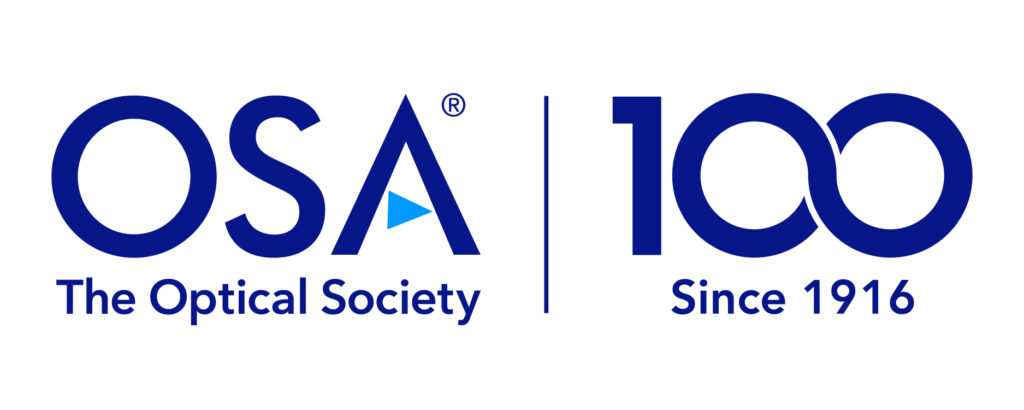
Founded in 1916, OSA is the leading professional association in optics and photonics, home to accomplished science, engineering, and business leaders from all over the world.
“Congratulations to the 2021 Fellows,” said 2020 OSA President Stephen Fantone. “Your election, by your peers, is affirmation of your impressive accomplishments within our field. Thank you for your dedication to OSA and for advancing the science of light.”
Words: Lynn Roberson |Image: Gregory Gbur (left) and Thomas Suleski are well-known in the Charlotte region and more broadly for their research, and their dedication to sharing their expertise and practical implications for optics and photonics with others.
Botanical Gardens Offers Plants, Expertise During Online Fall Plant Sale
This year’s UNC Charlotte Botanical Gardens sale format will offer a wide selection of plants and the expertise of Gardens’ staff. However, it will feature online ordering instead of in-person shopping, and scheduled in-person pick-ups, in response to COVID-19 distancing requirements.
The link to order will be emailed to all current Botanical Gardens’ members on the first day of the member sale, which is Saturday, Sept. 19. The links to sign up for a pickup time will be emailed after online checkout.
For non-members, online sales begin Sept. 26 at 7 a.m. The link to the public online sale will be posted on the Gardens website at 7 a.m. on September 26. Pickup will be touch-free. Botanical Gardens staff and volunteers will load plants for purchasers.
Members receive a discount of either 10% or 15% depending on the type of membership, a free native plant, and more time for questions and answers during Zoom chats. Memberships, which are good for one year, can be purchased here.
Buyers will find an outstanding selection of native and non-native hardy shrubs, trees, perennials, wildflowers, and ferns. This sale will be a bit more limited this year than in years past, with no annuals, houseplants, succulents, or tropicals. All proceeds support the operations of the Gardens, including the McMillan Greenhouse.
Learn more about the Gardens and the plant sale on the Gardens website.
